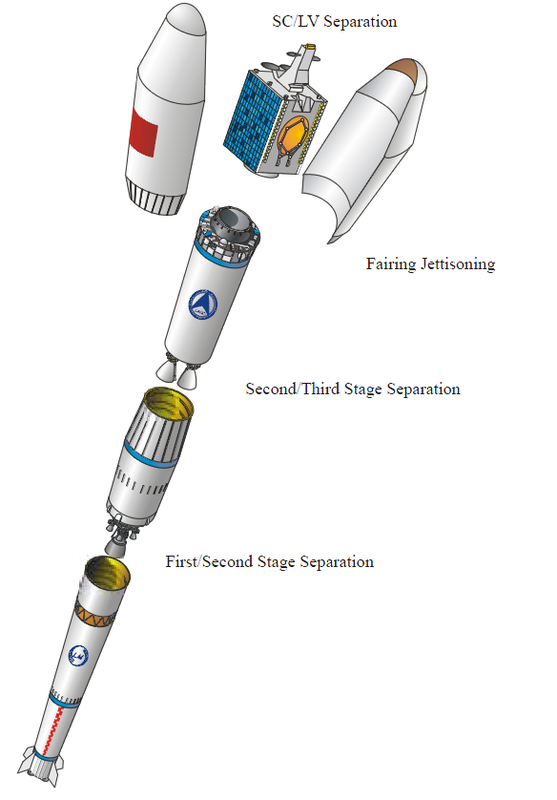Long March 3A Launch Vehicle
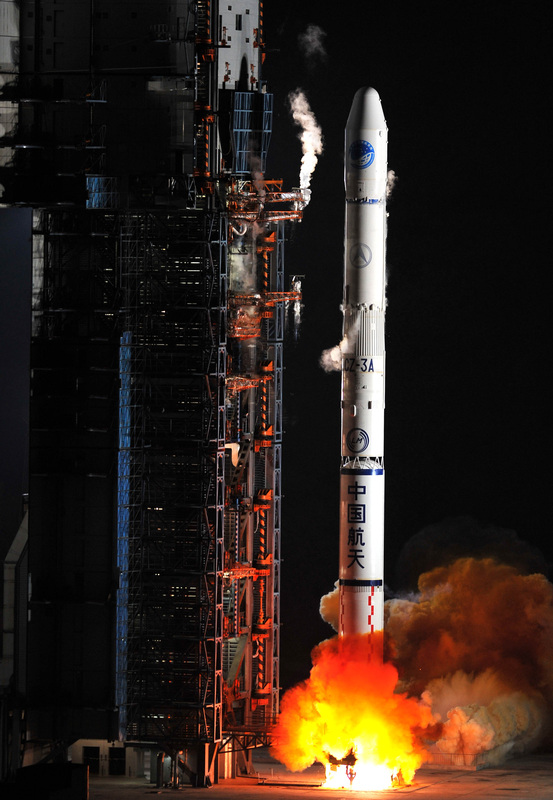
The Long March 3A is part of China’s Long March (Chang Zheng) rocket series, building the basis for the CZ-3 launch vehicle family that is primarily used for high-energy missions. In essence, Long March 3A consists of a three-stage stack with no boosters, while the heavier Long March 3C sports two and Long March 3B uses four boosters, still using the basic CZ-3A stack.
The CZ-3 series are the heavy-lifters in China’s fleet of Long March (CZ) rockets. They are based on the CZ-2E launch vehicle featuring an additional Cryogenic Upper Stage. Primarily, CZ-3A is used to launch light-weight satellites into Geostationary Transfer Orbit including weather satellites or navigation satellites headed for GEO or MEO.
Long March 3A was developed in the late 1980s into the early 90s out of the original CZ-3 design that first flew in 1984. CZ-3A made its first flight in 1994. The Long March 3B and 3C began development in the second phase of the CZ-3A upgrade program to meet the needs of the international GEO communications satellite market. Development started in 1986 and started out with the CZ-3A design & adding four boosters to the first stage and improving control systems followed by the inauguration of the two-booster version a decade after CZ-3B.
Long March 3B launched on its maiden mission on February 15, 1996 – a day that lived down in spaceflight history as the vehicle lost its Guidance System two seconds after liftoff and crashed into a nearly village, killing six people and leaving 57 injured. The first successful mission of the CZ-3B came on August 20, 1997 when it lofted the Agila 2 MABUHAY communications satellite to Geostationary Transfer Orbit.
In 2007, the Long March 3B/E made its inaugural flight. It features stretched booster and first stage tanks to increase the vehicle’s GTO capability by 400 Kilograms.
Long March 3C made its first launch on April 25, 2008, delivering the Tianlian-1 communications satellite to orbit. The enhanced version, CZ-3C/E made its first flight in October 2014 lofting the Chang’e 5-T1 spacecraft into a circumlunar trajectory.
CZ-3A Specifications
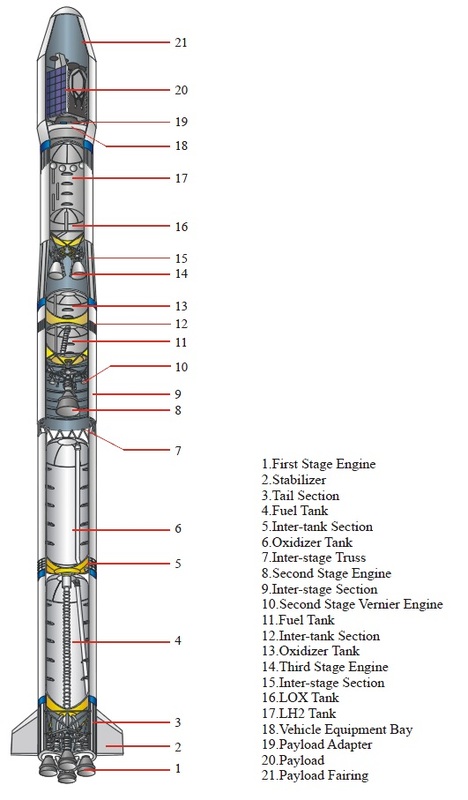
| Type | Long March 3A |
| Height | 52.52m |
| Diameter | 3.35m |
| Launch Mass | 241,000kg |
| Stages | 3 |
| Boosters | None |
| Mass to LEO | 6,000kg |
| Mass to SSO | 5,000kg |
| Mass to GTO | 2,650kg |
Long March 3A stands 52.5 meters tall with a diameter of 3.35 meters and a launch mass of 241,000 Kilograms consisting of two lower stages that use hypergolic propellants and a cryogenic upper stage. The vehicle is operated from the Xichang Satellite Launch Center.
The first and second stage use storable propellants, Unsymmetrical Dimethylhydrazine and Nitrogen Tetroxide while the third stage uses cryogenic propellants, Liquid Hydrogen and Liquid Oxygen.
CZ-3A can deliver payload of up to six metric tons into Low Earth Orbit, 5 metric tons into Sun Synchronous Orbit and 2,650 Kilograms into a standard Geostationary Transfer Orbit making it suitable for medium-weight GEO satellites.
First Stage
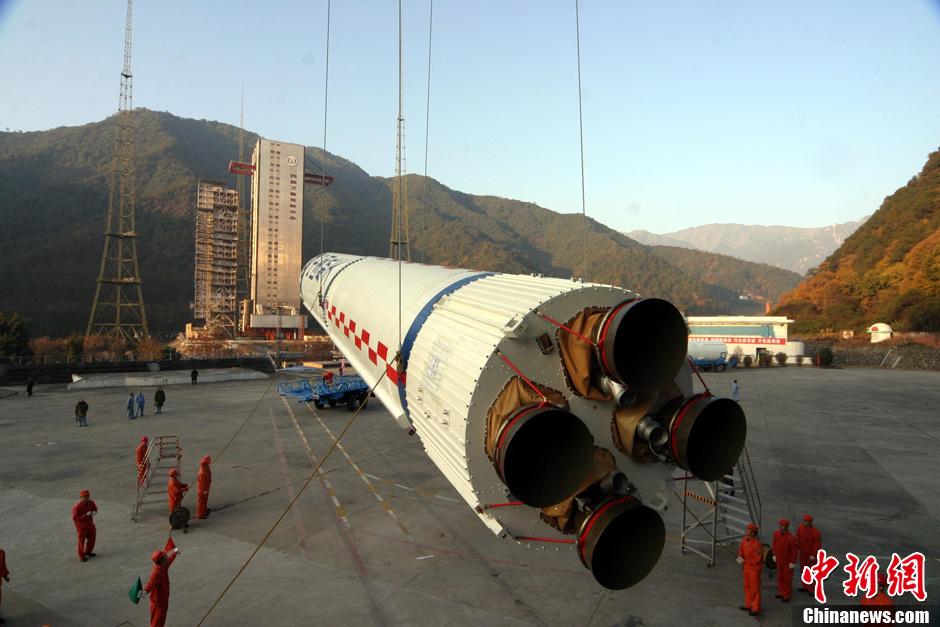
| Type | CZ-3A/B/C First Stage |
| Length | 23.27m |
| Diameter | 3.35m |
| Launch Mass | 183,900kg |
| Empty Mass | 12,125kg |
| Fuel | Unsymmetrical Dimethylhydrazine |
| Oxidizer | Nitrogen Tetroxide |
| Propellant Mass | 171,775kg |
| Propulsion | DaFY-6-2 (4 x DaFY-5-1) [YF-20 type] |
| Thrust SL | 2961.6kN |
| Specific Impulse | 2556.2Ns/kg |
| Chamber Pressure | 71bar |
| Burn Time | 146s |
| Control | Engine Gimbaling |
| Stage Separation | Hot Staging, 14 Pyro Bolts |
The large first stage of the Long March 3A is 23.27 meters long and 3.35 meters in diameter, also following the basic design with the oxidizer tank located above the fuel tank. The tanks use individual bulkheads which create a small inter-tank area that is used to facilitate equipment. The NTO line is again routed through the fuel tank to reach the engines.
The core stage has an inert mass of over 12,100 Kilograms and carries a propellant load of 183,900 Kilograms, also using NTO and UDMH.
First stage propulsion is provided by a DaFY-6-2 engine which is a cluster of four DaFY-5-1 engines that are also used on the boosters. The four engines provide a total sea level thrust of 2961.6 Kilonewtons (302,000 Kilogram-force). Vehicle control during first stage flight is accomplished by individually gimbaling the four engines. The first stage has a burn time of 146 seconds.
Stage separation uses the hot-staging technique. The second stage vernier engine is ignited before first stage cutoff. Moments after shutdown of the first stage, 14 Pyro Bolts are fired to severe the attachment of the first and second stage to allow the first stage to be pushed away by the exhaust of the vernier engine. A short time later, the second stage ignites its main engine to continue powered flight.
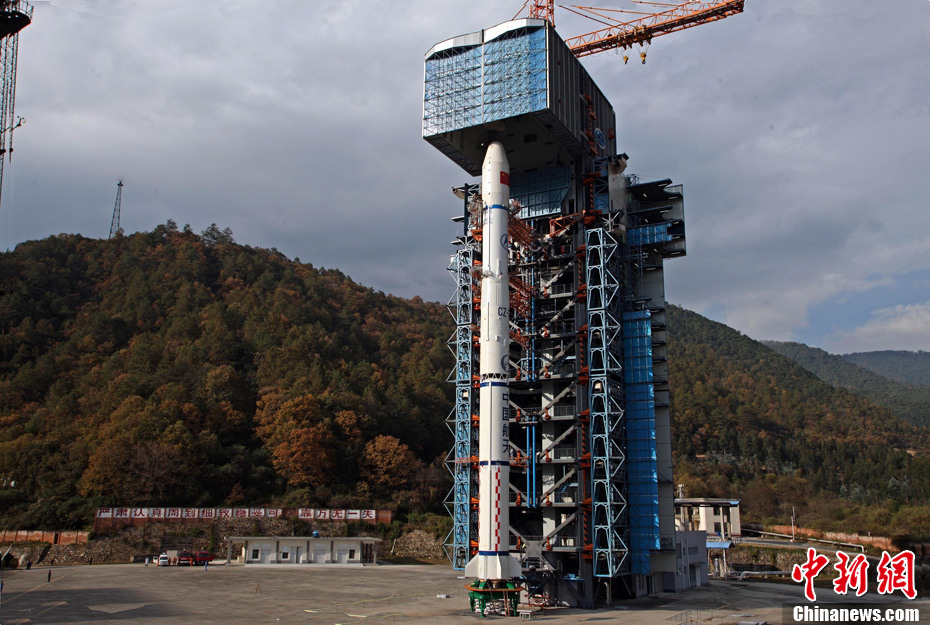
| Type | CZ-3A/B/C Second Stage |
| Length | 12.92m |
| Diameter | 3.35m |
| Launch Mass | 53,453kg |
| Empty Mass | 3,848kg |
| Fuel | Unsymmetrical Dimethylhydrazine |
| Oxidizer | Nitrogen Tetroxide |
| Propellant Mass | 49,400kg |
| Propulsion – Main | DaFY-20-1 [YF-22] |
| Propulsion – Vernier | DaFY-21-1 [YF-23] |
| FY-20-1 Thrust | 742kN |
| Vernier Chambers | 4 |
| Vernier Thrust | 4 x 11.8kN (Total: 47.2kN) |
| Main Impulse | 2922.6Ns/kg |
| Vernier Impulse | 2910.5Ns/kg |
| Control | Vernier Gimbaling |
| Burn Time | 178s (Main) 184s (Vernier) |
| Stage Separation | Pyro Bolts, Retrorockets |
Second Stage
The CZ-3A second stage also uses hypergolic propellants stored in two separate tanks with the oxidizer tank located above the fuel tank and the associated oxidizer line routed through the UDMH tank.
The stage is 12.92 meters long and shares the first stage’s diameter of 3.35 meters. It has an empty mass of 3,850 Kilograms and is loaded with 49,400 Kilograms of propellants that are consumed by a single DaFY-20-1 main engine and a four-chamber DaFY-21-1 vernier engine.
The DaFY-20-1 main engine is a version of the YF-22 engine. It is about one meter in diameter featuring an extended nozzle, optimized for operation in vacuum.
The engine provides 742 Kilonewtons of thrust (75,660 Kilogram-force). It features a similar design to the first stage engines with individual turbopump equipment and plumbing for the oxidizer and fuel.
Propellant tank pressurization is provided by A gas generator and heat exchanger that supply pressurant gas during the combustion process.
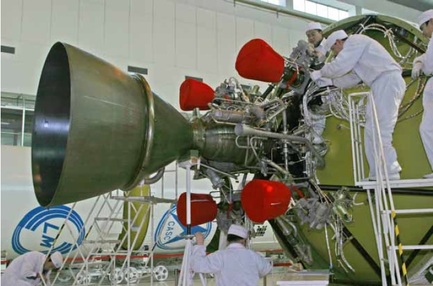
The DaFY-21-1 vernier engine is connected to the main propellant feed lines and includes its own turbopumps spun by a single turbine as part of a open-cycle gas-generator engine design. Four chambers are fed by the turbopumps, each providing 11.8 Kilonewtons of thrust (1,200 Kilogram-force). The nozzles can be gimbaled individually to provide vehicle control during flight.
The second stage main engine burns for 178 seconds while the vernier engine operates six seconds longer due to hot-staging. Stage separation between the second and third stages is accomplished by pyrotechnic bolts. The second stage is equipped with retrorockets to safely move it away from the upper stage.
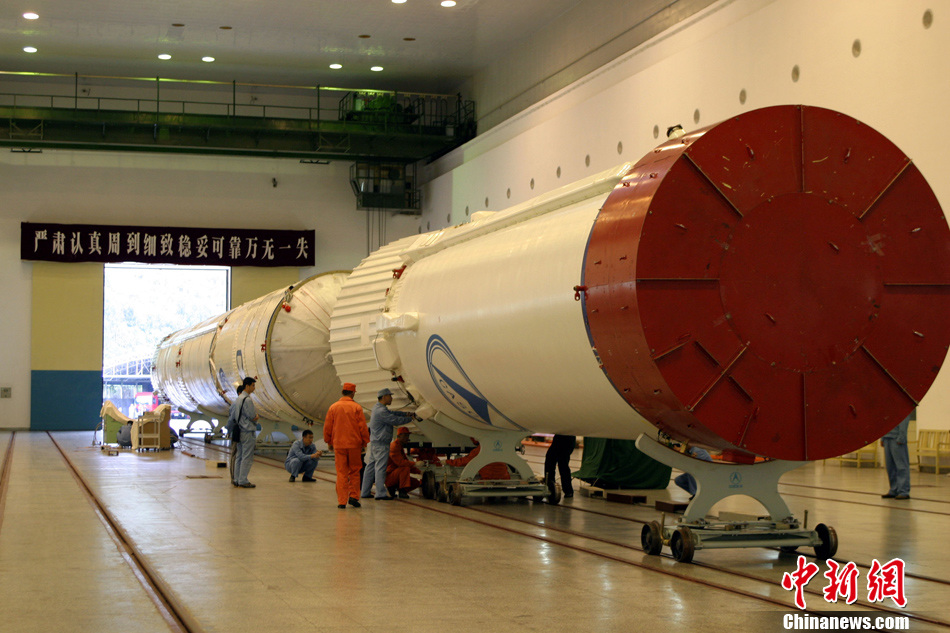
Third Stage
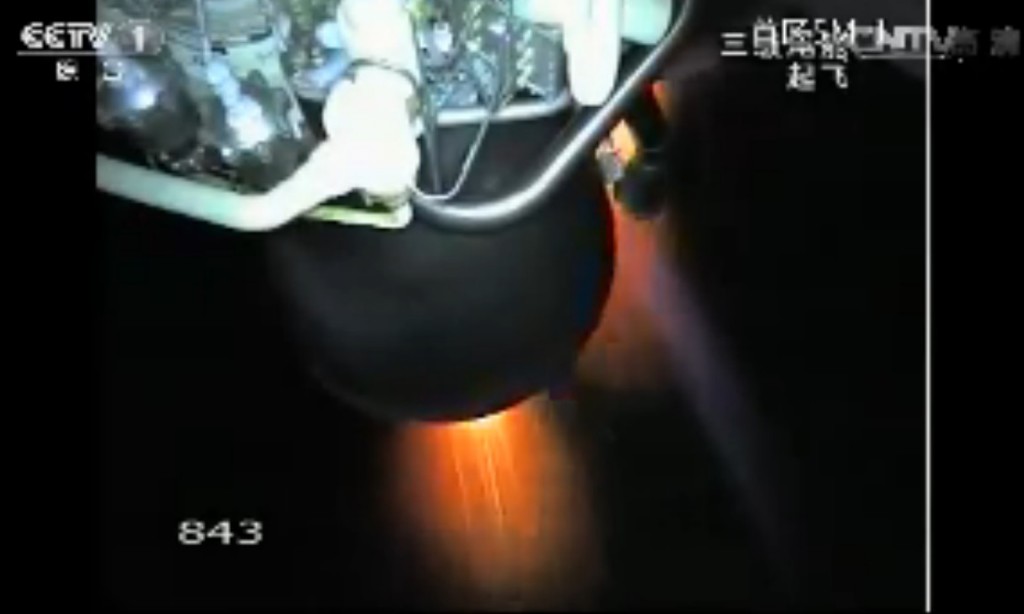
| Type | CZ-3B Third Stage |
| Length | 12.38m |
| Diameter | 3.0m |
| Launch Mass | 20,933kg |
| Empty Mass | 2,740kg |
| Fuel | Liquid Hydrogen |
| Oxidizer | Liquid Oxygen |
| Propellant Mass | 18,193kg |
| Propulsion | YF-75 |
| Thrust | 156.9kN |
| Specific Impulse | 4,312Ns/kg |
| Chamber Pressure | 37.6bar |
| Area Ratio | 80 |
| Restart Capability | Yes |
| Prop Utilization | Yes |
| Burn Time | 469s |
| Control | Engine Gimbaling (Pitch & Yaw) |
| Attitude Control Sys | 4x70N, 8x40N (Roll, Pitch & Yaw) |
| Prop Management | 2x300N, 2x45N |
Long March 3A uses a cryogenic upper stage that provides re-ignition capability to perform GTO or interplanetary insertions. Overall, the stage is 12.38 meters long with a reduced diameter of 3.0 meters having an inert mass of 2,740 Kilograms. The third stage carries a total propellant load of 18,193 Kilograms of Liquid Hydrogen and Liquid Oxygen.
The LH2 tank is located above the LOX tank and the two share a common bulkhead. The two tanks are equipped with propellant level sensors that provide information of the Propellant Utilization Sensor of the vehicle that then provides data to the telemetry and control system to adjust the mixture ratio to optimize the residual propellants left inside the stage after burnout and increase overall launch vehicle performance. The Propellant Level Meters are also used during propellant loading.
The third stage is equipped with an YF-75 cluster of two cryogenic main engines providing a total vacuum thrust of 156.9 Kilonewtons (1,600 Kilogram-force) operating at a chamber pressure of 37.6 bar. The engines are optimized for operation in vacuum conditions with an area ratio of 80:1. Two allow CZ-3E to fly GTO missions, the engine can re-ignite on a second burn following an initial boost into a Parking Orbit. This second burn then delivers that vehicle to its elliptical GTO or escape trajectory. The engines can be gimbaled for vehicle control.
Third stage propellant tank pressurization is accomplished using high-pressure Helium for the LH2 tank and a combination of Helium and gaseous LOX.
The third stage is equipped with a monopropellant Propellant Management and Attitude Control System. The Propellant Management System is used for propellant settling burns ahead of main engine burns. The system consists of two 300-Newton thrusters and two 45-Newton thrusters. In addition to propellant management, the thrusters are also used for performance optimization during engine burns and for a variable Velocity Adjustment after the second burn of the upper stage to optimize the insertion trajectory.
The Attitude Control System of the third stage is used during coast phases for vehicle re-orientations and to orient the stack for spacecraft separation. It consists of three banks of thrusters, one for each axis. Pitch control is provided by two 70-Newton and two 40-Newton thrusters. For Yaw-actuation, the system also uses two 70N and two 40N jets. Roll control is provided by four 40N thrusters.
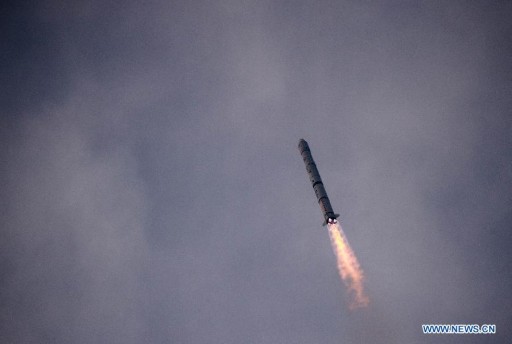
All PM and ACS thrusters are fed from a single Hydrazine tank that is pressurized using high-pressure gas that is stored in two spherical tanks.
Atop the third stage sits the Vehicle Equipment Bay that includes the main electronics, the Guidance, Navigation and Control equipment and communications system. The third stage uses two beacons and a single transponder for tracking and range safety. Two antennas are used for telemetry relay.
The control system consists of a guidance unit, attitude control system, sequencer, power distributor and other components. It adopts a four-axis inertial platform, on-board computer and digital attitude control devices. The system implements a programmable electronic sequencer, triple-channel decoupling, dual-parameter controlling, and real-time compensation for measuring error.
Payload Fairing
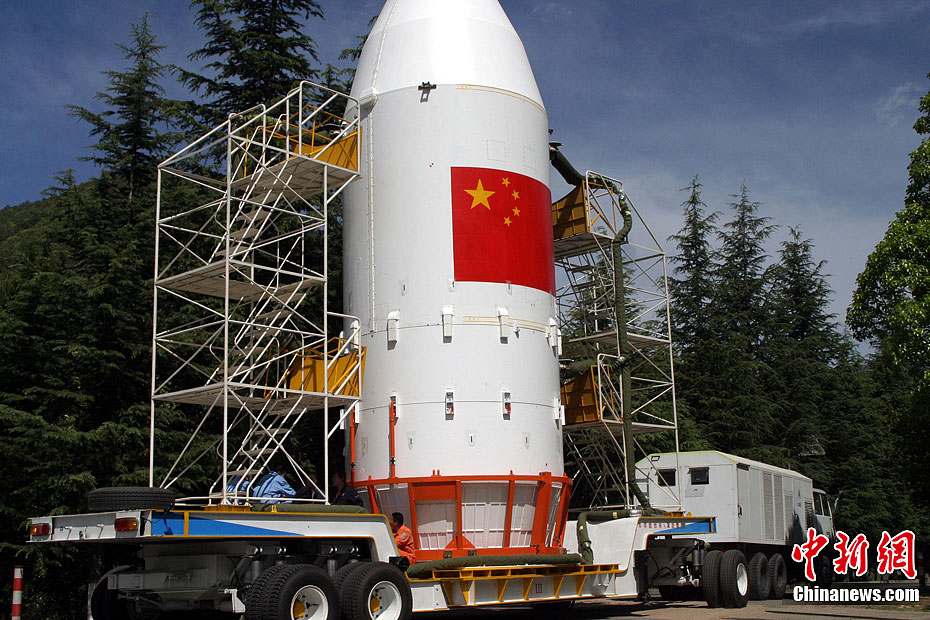
| Diameter | 4.0m |
| Length | 9.56m |
| Mass | 1,500kg |
| Separation | Pyro Bolts, Pyro Cord |
| Hinges for outward Rotation |
The Payload Fairing is positioned on top of the stacked vehicle and its integrated spacecraft. It protects the vehicle against aerodynamic, thermal and acoustic environments that the launcher experiences during atmospheric flight. When the launcher has left the atmosphere, the fairing is jettisoned. Separating the fairing as early as possible increases ascent performance. Long March 3A uses a 4-meter wide fairing.
The fairing consists of a reverse cone section, a cylindrical section, two biconic segments and a dome. Fairing air conditioning is provided to maintain thermal requirements of the spacecraft. Also, RD windows and other accommodations can be added to the fairing.
The fairing dome is a semi-sphere body that has a radius of 1000mm and a height of 661mm having a base ring diameter of 1890mm. The dome includes a stiffener to add structural stability. The dome shell consists of 8mm thick fiberglass while the base ring and stiffeners consist of aluminum alloy.
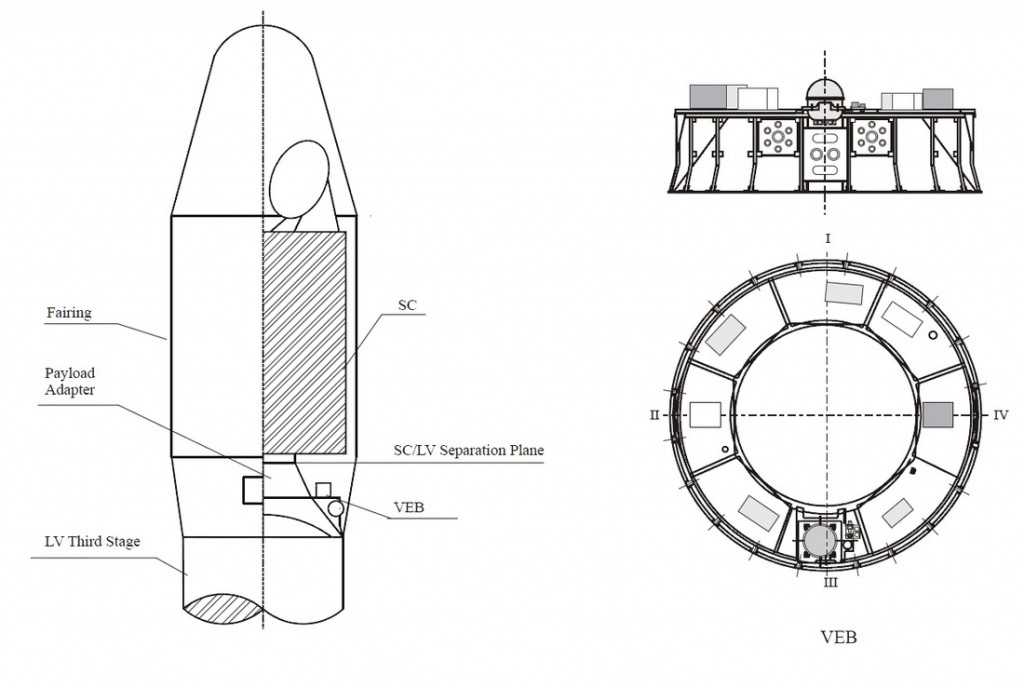
A silica-rubber wind belt is used to cover the outside of the fairing split line while a rubber seal within the spilt line is compressed to keep the fairing air tight.
The biconic section consists of a 25-degree cone that is 1400mm high and a 15-degree cone with a height of 1500. The two sections are joined together and have a base diameter of 4000mm.
The cylindrical section, like the biconic segments, consists of aluminum honey comb sandwich materials. The reverse cone section features a top, bottom and intermediate ring and inner stiffeners and chemical-milled skin. This section can facilitate the payload access doors.
The fairing is connected to the launch vehicle using 12 non-contaminating explosive bolts that are fired to separate the fairing. The two fairing halves are separated using notched bolts, explosive bolts, and an explosive cord with initiators. Hinges are used to ensure a good outward fairing separation.
Payload Adapters
Payload Adapters interface with the vehicle and the payload and are the only attachment point of the payload on the Launcher. They house equipment that is needed for Spacecraft Separation and ensure that the payload is secured during powered flight. Electrical and Communication connections are also part of the Adapter and route spacecraft Telemetry to the Flight Computers for downlink.
A variety of different off-the-shelf adapters is available for different spacecraft needs and requirements.
